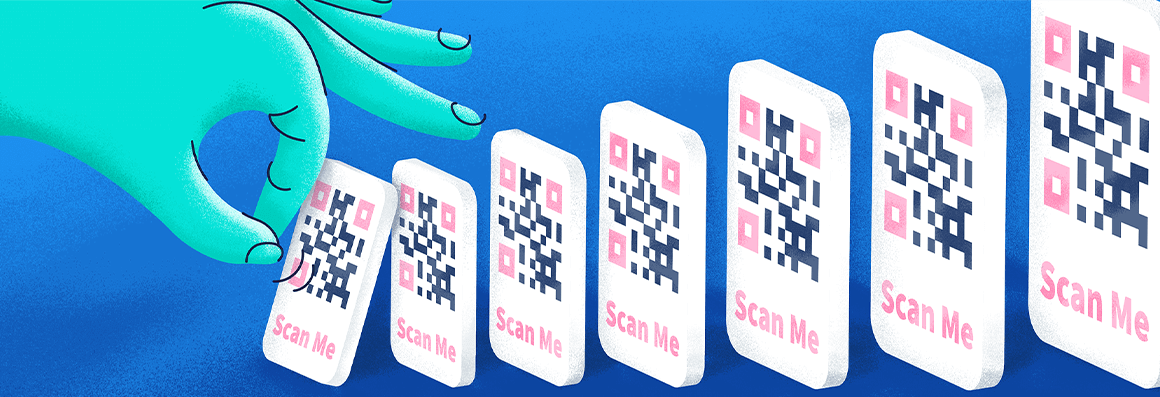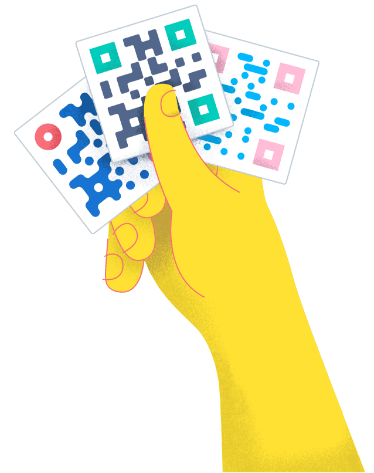- Best Practices ●
- COVID-19 ●
- Industry Trends ●
- Partners ●
- Product ●
How Are QR Codes Generated? A Step-by-Step Guide
When was the last time you encountered a QR Code? Maybe there was one on the back of the cereal box you used at breakfast this morning—or one on a poster in your doctor’s office waiting room. You might even be sitting across from one right now.
People are increasingly coming up with creative uses for QR Codes, hence their massive presence. They blend physical and digital experiences, helping businesses and customers connect seamlessly on all fronts.
And best of all? They’re versatile and easy to use, allowing companies to meet a wide range of needs, from inventory management to digital marketing. Wondering how to create QR Codes? Read on for a step-by-step guide.
All about QR Codes: What you should know
If you’re curious about what these nifty little boxes are, here’s a breakdown of everything you need to know about QR Codes.
What are QR Codes?
A QR Code, short for Quick Response Code, is a scannable 2D version of the Barcode. It consists of square and rectangular modules, seemingly arranged in a random pattern.
QR Codes were developed in 1994 by Masahiro Hara, the chief engineer of the Japanese company Denso Wave, to help streamline inventory and logistics management. Over time, they’ve become indispensable across a wide range of industries.
Now, what many people don’t know is that QR Codes fall into two main categories: Static and Dynamic QR Codes. While they may look alike, their functionality differs. Static QR Codes store fixed info, while Dynamic QR Codes carry changeable information.
Dynamic QR Codes are a top choice for many businesses, as they’re versatile and have tracking capabilities that can help you improve campaigns using scan data.
In addition, there are tons of customization options now for QR Codes. For example, when you create a QR Code using QR Code Generator PRO, you can style it with your brand colors and logo or image. You can also add a custom frame with a unique CTA (call to action).
What’s more, you can download QR Code designs into four different image file formats (JPG, PNG, SVG, and EPS) to meet all your design requirements.
How do you create QR Codes?

Before we delve into how to create these versatile innovations, let’s look at some QR Code basics that’ll give you a better understanding of them.
There are seven basic elements in a QR Code. These elements form pixels, creating a puzzle-like format that tells the scanner how to read the code and access the data for whatever content you’ve linked.
You can use a web-based tool like QR Code Generator PRO to link different types of content to a QR Code, including images, videos, digital business cards, PDFs, social media links, website pages, and much more. You only need to enter your content’s URL into the generator to transform it into a scannable code.
How do QR Codes work?
QR Codes work by arranging strings of data into the black-and-white pixels you see. The dots represent a “1” in binary code, while the white spaces represent a “0.” When you hover a QR Code reader or your mobile device over the pixelated squares, it reads the code and directs you to the encoded content.
QR Codes retrieve information quickly because scanners can read them both horizontally and vertically (as opposed to one-dimensional Barcodes). When combined with a short URL (which shortens and speeds up link loading times), scanning a QR Code with a smartphone and viewing the linked information takes just seconds.
How do you use QR Codes?
Scanning and reading QR Codes has become simple thanks to smartphones. There are different ways of reading QR Codes depending on your device (smartphone or tablet) and your operating system.
To do this, simply open your camera and point it toward the QR Code you want to decode. A pop-up should appear, directing you on what to do to open the code’s URL.
If this doesn’t happen, go to your camera app settings, enable QR Code scanning, and try again. If you can’t enable scanning, don’t worry—just download a third-party QR Code scanner app.
Where do people use QR Codes most?
There has been an increase in global adoption of QR Codes since the COVID-19 pandemic. QR Codes facilitate contactless interactions—with the pandemic being all about no or minimal contact, it became the go-to solution for businesses.
This sparked a rising interest in the pixelated squares, with companies now using them not only for payments but also for marketing, asset management, and signage. You may even come across people with QR Code tattoos!
According to Bitly’s QR Code Trends Report, QR Code generation increased by 41% in the first half of 2023 alone. This shows that people aren’t playing around when it comes to leveraging convenient solutions.
There was substantial growth in numerous countries, including the United Kingdom, Switzerland, the United States, Germany, and France. Some of the leading industries included restaurants and leisure, professional services, and consumer services.
Can you edit or track QR Codes?
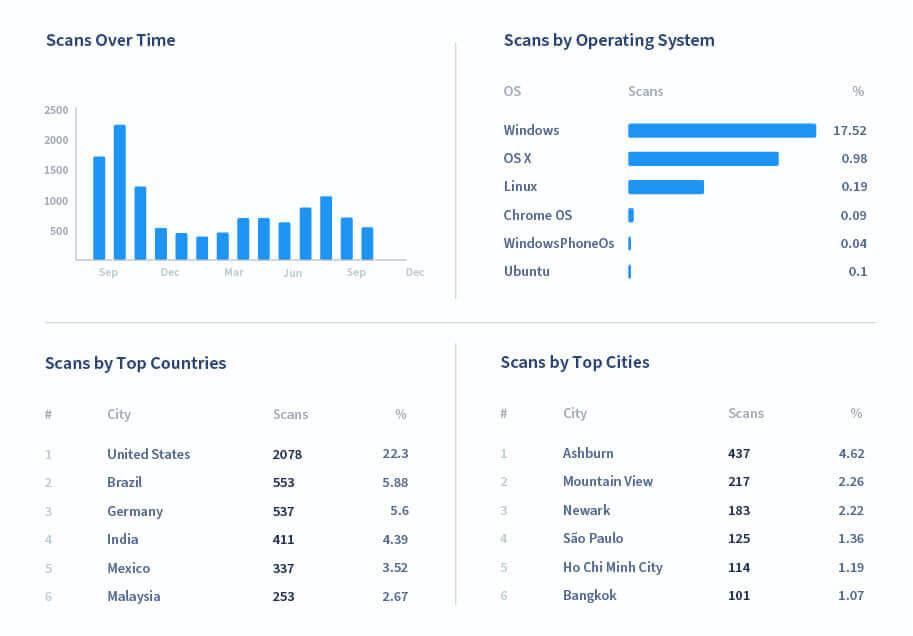
Simply put, yes, you can edit and track QR Codes—but only Dynamic QR Codes. When you create Dynamic QR Codes with QR Code Generator PRO, you can track scan metrics for your QR Code campaigns. This includes location by city and country, unique vs. total scans, time scanned, and even operating systems and devices used.
Further, you can edit the content connected to your Dynamic QR Code. If you need to update a link or even change the type of QR Code, you don’t need to design or reprint a new QR Code to do so. Simply log in, make the edits, and hit save for the changes to take effect immediately.
What you need to consider before generating QR Codes
The first thing to consider before generating QR Codes is the type of content you want to link them to and their intended uses. This way, you can choose the most suitable types of QR Codes for your content before getting into the creation process.
For instance, if you want to create a QR Code to share your contact information during a networking event or for business use, a vCard QR Code is appropriate. For a video detailing product use instructions or tutorials, a Video QR Code is ideal.
After determining the most suitable QR Code type, prepare your content, ensuring it meets your goals. This can enhance marketing strategies and user engagement because there is alignment between goals and execution/creation.
Finally, it’s time to get into the actual creation process. If you’re looking for a reliable, user-friendly solution, QR Code Generator PRO is one of the best options available.
A step-by-step guide on how to generate QR Codes
Ready to take the leap and streamline business processes and customer experiences? Here’s a detailed guide on how to create your own QR Codes:
Step 1: Sign up for QR Code Generator PRO
If you’re looking for a simple-to-use single or batch QR Code generator for your QR Code needs, look no further than QR Code Generator PRO. With this platform, anyone, regardless of tech expertise or experience with QR Codes, can create them in minutes.
The solution doesn’t just allow you to generate Static Codes. You can also create Dynamic QR Codes, edit their destinations whenever necessary, and track their performance. In short, you get complete control over your campaigns and in-depth insights you can use to improve future ones.
Additionally, you get access to advanced customization options, making it easy to generate codes that align with your brand image.
To sign up, simply provide your email address or sign up with your Google account.
Step 2: Enter your information
When you create your account, you can get right into generating your codes. QR Code Generator PRO simplifies the process by providing prompts that show you which information to input.
Depending on the type of QR Code you want to create, you may need to enter your website URL, contact information like your phone number and address, social media profile links, or desired text. For example, for a Social Media QR Code, you’ll only need to enter your social media profile URLs—and sometimes, all you need to enter is your username!
Step 3: Customize your QR Code
Who wants bland black and white squares when you can design your QR Code however you want to boost its visual appeal? With QR Code Generator PRO, you can customize your code to align with your brand identity.
After you’ve input the information for your QR Code, the platform will take you to the design page. There, you can choose a unique frame, select your preferred pixel style, use your brand colors, and even add your business logo to the code to make it recognizable.
When you’re done, just select the Download prompt next to your QR Code.
Step 4: Test the QR Code
The last thing you want is a QR Code that doesn’t work. It can affect customers’ experiences and impact their perception of your business.
Be proactive and test your QR Code with different mobile devices and scanning apps to ensure it directs customers to the desired destination quickly. During your tests, change the lighting, too, to make sure the code works in various conditions.
Step 5: Deploy your QR Code
When you’re sure your QR Code works appropriately, incorporate it into marketing materials like flyers and billboards, as well as digital platforms like your website or social media pages. If you want maximum reach, leverage both physical and online mediums.
Make sure you choose proper QR Code sizing and placement for optimal visibility and access. Ideally, your QR Code should be at least 2 x 2 cm for seamless scanning, but it also needs to be big enough for people to see it easily. Also, make sure there is plenty of white space around it to prevent scanning interference.
Examples of the many uses of QR Codes
QR Codes offer both personal and business advantages. Because so many people now have smartphones, marketers are using QR Codes in campaigns to make content easier to access. To give you an idea of how to incorporate these innovative solutions into your business, here are a few examples of their many use cases.
Inventory management
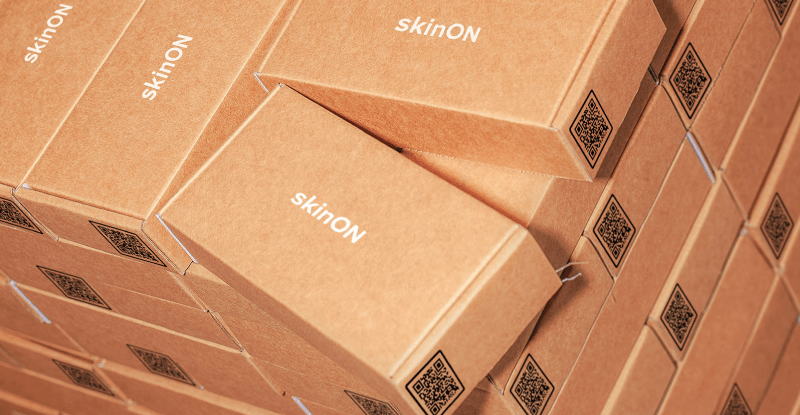
If you run a business that handles inventory, QR Codes can be the difference between spending days assessing your inventory and only spending a few hours. Since you can scan them from multiple directions, your team doesn’t need much time to scan products as they enter and leave your warehouses.
QR Codes also streamline inventory management by providing real-time scan data when linked to your inventory management databases. With these combined tools, you can see when and where your products are scanned to determine the stock and location of your inventory.
Print marketing campaigns
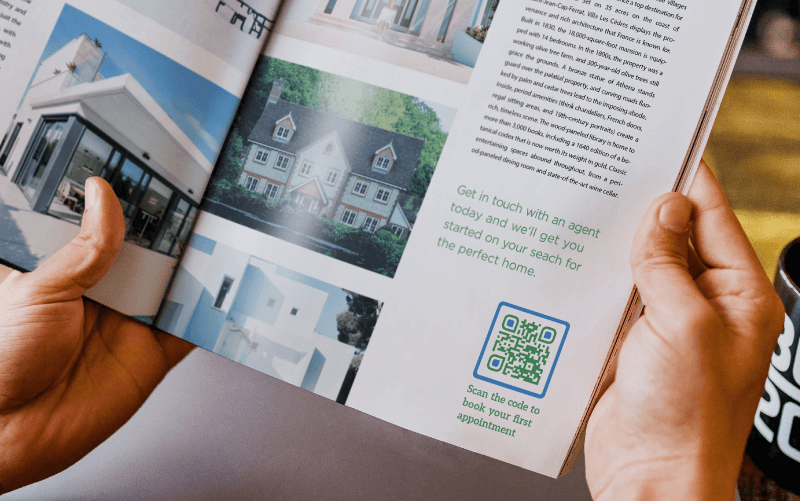
QR Codes enhance print marketing campaigns by providing seamless access to digital spaces. There, businesses can offer more information about their products and services or interact with their customers.
Suppose you’re a realtor looking to generate new clients. You can use QR Codes on print ads to promote your business, offer property information, allow potential buyers to book appointments online, and provide open-house details.
Digital marketing campaigns

QR Codes can also improve digital marketing campaign outcomes by facilitating seamless information sharing and cross-platform marketing. For example, you can incorporate App QR Codes into your social media posts to send your audience straight to your app download page.
You can also add Social Media QR Codes to your website to help clients find you on social media platforms more easily. Using QR Codes in these ways eliminates barriers and makes it simple for users to immediately connect with your business and offerings.
Integrated marketing campaigns

Want to maximize your brand reach? You can use QR Codes on physical and online marketing mediums to catch customers’ interest from all angles. This can also provide insights into the most impactful marketing mediums, allowing you to refine future marketing strategies.
Product packaging

Figuring out which product information to include on your packaging can be challenging. Too much print makes your packaging appear cluttered and unprofessional, while too little can leave your customers with many unanswered questions.
Luckily, you can always opt for QR Codes on the packaging. They let you provide all the information your customers need without overloading them. You can link packaging QR Codes to product tutorials to show clients how to use your products, social media pages to facilitate engagement, or even coupons to offer special deals.
Business cards
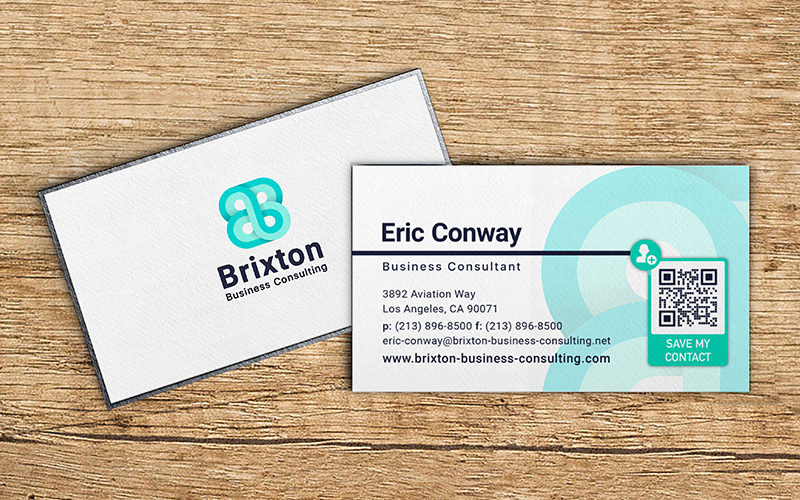
Looking for an easy way to share contact information and connect with potential clients or partners? Embed QR Codes on your business cards. This lets you maintain a clean, professional look and allows your audience to save your information with a single scan. Information sharing has never been so effortless!
Unlock the full potential of your QR Codes with QR Code Generator PRO
QR Codes are revolutionizing how businesses run processes and interact with target audiences, as it only takes a single scan to access a world of information. You can improve how you track inventory, share information, market products, and more, setting your business up for success.
With QR Code Generator PRO, you can forget about errors in inventory management, the hassle of sharing contact information, and the lack of insights in your marketing campaigns.
The platform allows you to create a wide range of QR Codes to improve business processes and enhance the ease of information-sharing in the fast-paced digital world.
Register for QR Code Generator PRO today to leverage the true power of QR Codes for your business.


